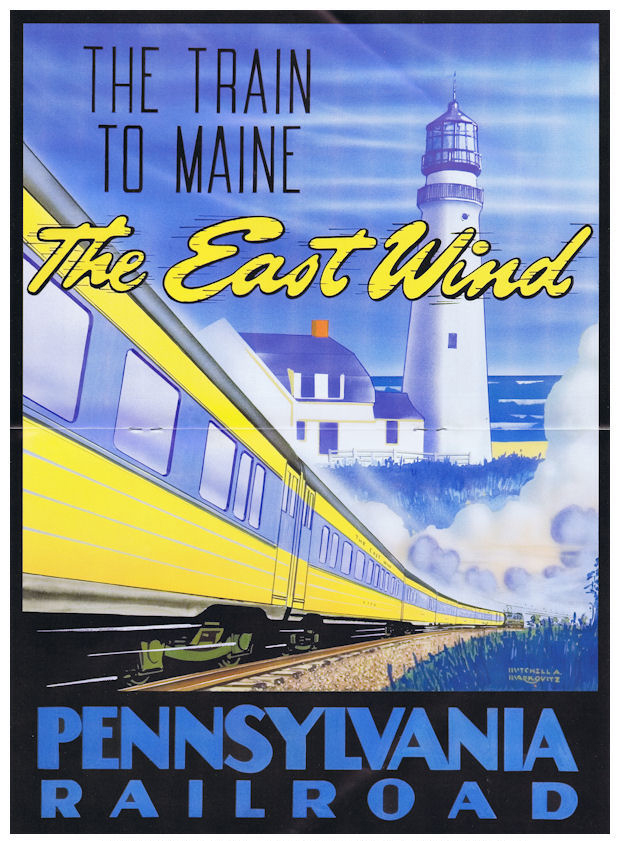Fed up with driving and buoyed by an Amtrak child fare sale, I recently booked three tickets from Alexandria, VA to Dover, NH with a connection in Boston for a summer trip. This modern-day route parallels the East Wind, a seasonal day train that briefly connected Washington, DC with Maine.
In the days before widespread air conditioning and air travel, many Americans would travel north to northern New England and Canada for vacations in the cooler air. Capitalizing on this trend, the East Wind began in 1940 as a limited stop, daytime all-coach seasonal service from Washington, DC to Bangor, ME. Conceived by the Boston and Maine Railroad (B&M), it also operated on the Maine Central, New Haven Railroad, and Pennsylvania. At the time, most long-distance trains were overnight sleeper services including the B&M’s own Bar Harbor Express and State of Maine and those additional fares for the sleeper service went to the Pullman Company instead of the railroads themselves.The East Wind’s consist included a baggage car, three coaches, a tavern-lounge car and a dining car. For its first three seasons, the two trainsets were painted yellow but after World War II, the trainsets had the liveries of the operating railroads. The train would have held 200-250 passengers depending on how many seats each coach held.
1941 Timetable 1955 Timetable
The B&M’s annual reports noted that the East Wind revenue was outstandingly good for its first several seasons. One reason was that it was marketed as an alternative to driving. One poster read, Who now would think of driving over hot, crowded highways, when so superbly appointed a train awaits?
Resuming direct train service to northern New England is feasible. Following its original route from Washington, DC to New Haven, it would then use the recently upgraded Hartford Line to Springfield. It would use CSX freight railroad’s Springfield-Worcester line which Massachusetts plans to upgrade to add more service. In Worcester, it would switch to a lightly used CSX line that has not hosted passenger trains since 1960, running to Ayer. It would then use CSX’s line to Lowell and Ballardvale where it would link to the existing Downeaster service. That 52-mile section of track would require upgrades to allow 79 mph passenger trains.
One way to restore service quickly is to add five cars to the Vermonter and split that train to Springfield, allowing five new cars to run to Maine. If the new train replaces one of the Downeaster’s frequencies, only five new cars and one additional locomotive would be needed. Initially, the train would take 11:46 between Washington and Portland (see timetable below), slower than the East Wind’s 11:15, but subsequent upgrades could reduce travel time to 9:00.
Until the East Wind returns, I look forward to my train trip via Boston.




